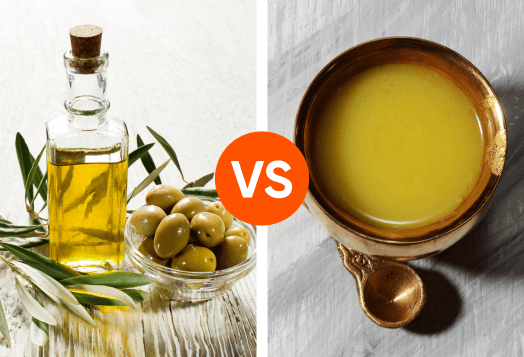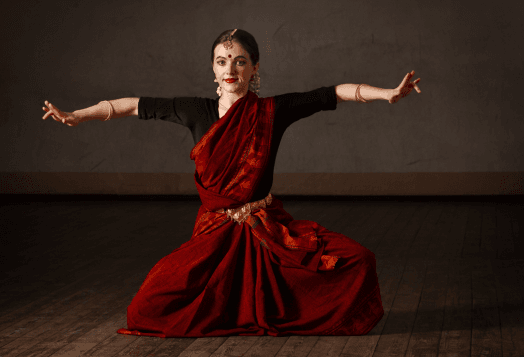There's a rising trend to give our spaces a unique identity that reflects heritage and individuality. Indian aesthetics, characterized by intricate craftsmanship and vibrant motifs, are seamlessly blending into contemporary design. As we embrace minimalism and functionality, modern living is evolving into a fusion of global trends and rich local traditions. Here's how to incorporate the charm of India into your home.
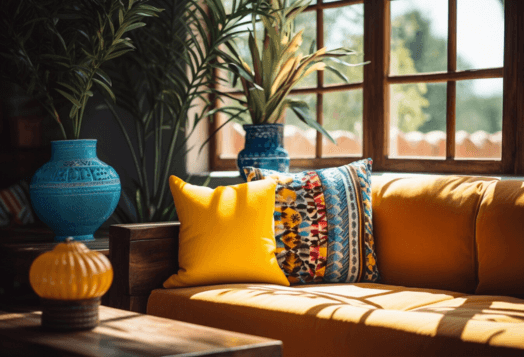
1. Celebrating craftsmanship
Indian homes have always been repositories of craftsmanship. In a 2025 living room, celebrate this legacy by showcasing:
1. Decor accents
Terracotta vases and brass figurines are timeless additions that not only add a cultural narrative but also complement the clean lines of modern home design. Pair these with contemporary shelving or display units that echo modern principles, creating a harmonious blend of the old and the new. For a personal touch, explore DIY home decor options to create unique displays for cherished pieces.
2. Handloom textiles
Handwoven throws or cushion covers bring a richness that resonates with Indian heritage. Choose fabrics with traditional weaves and integrate them into your living room. These elements can also seamlessly tie into modern bedroom designs, creating a cohesive aesthetic throughout your home, much like how thoughtful small kitchen designs balance style and functionality.
3. Modern bed design
A bed frame with a headboard featuring intricate carvings or Jali work can add a touch of elegance and cultural richness. Alternatively, opt for a platform bed with a sleek design and accessorize it with colourful cushions and throws in Indian textiles.
2. Designing living rooms: marrying tradition with modernity
Modern living rooms are no longer just spaces to entertain guests; they are versatile hubs for relaxation, work, and personal expression. To integrate Indian aesthetics, think of accentuating key areas with artisanal elements. For instance:
1. Accent walls
Use hand-painted murals or traditional Indian wallpapers inspired by Mughal miniatures or Pattachitra art. Pair this with muted, modern bedroom designs on adjacent walls to maintain continuity.
2. Lighting
Statement lighting in brass or gold, reminiscent of temple lamps, can bring an Indian flair to a modern living design.
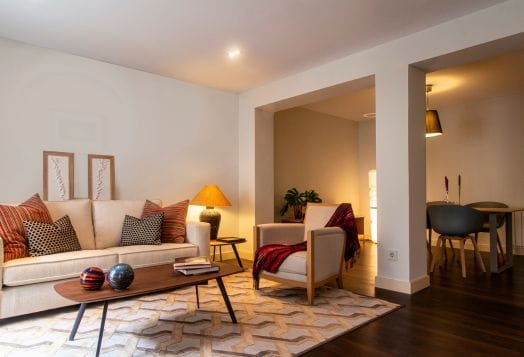
3. Colour stories: The Indian palette
While Indian aesthetics are synonymous with vibrant colours, the modern take leans towards subtler hues. Think muted pastels with bold accents:
1. Colourful walls
Experiment with earthy tones like sage green or terracotta for a calming backdrop. Pair these with statement furniture pieces to tie the room together.
2. Art pieces
Large-format contemporary artworks with Indian motifs—think mandalas or tribal art—can serve as conversation starters. Place them above minimalist furniture to add depth and character to the space.
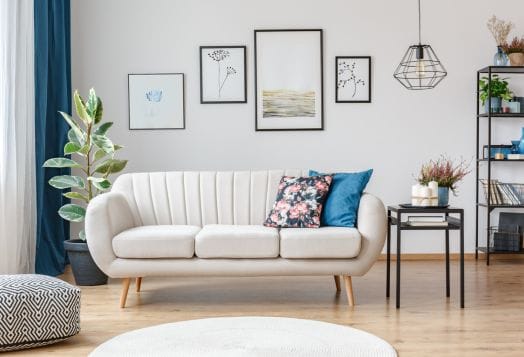
4. Bringing the outdoors in
1. Indoor plants
Use planters made of ceramic or brass to hold lush indoor plants like ferns, palms, or even sacred tulsi. Pairing greenery with sleek, modern furniture creates a peaceful yet stylish atmosphere that fits perfectly with modern living design.
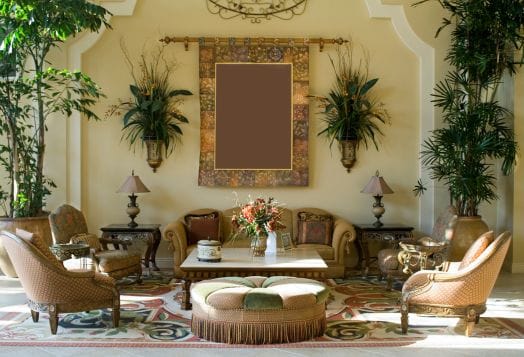
2. Jali screens
These perforated wooden panels are a quintessential Indian element that can beautifully integrate into a modern home design. Use them to partition spaces or as a backdrop for key furniture pieces. The interplay of light filtering through these screens adds warmth and texture, enhancing both the functionality and aesthetic appeal of your living room.
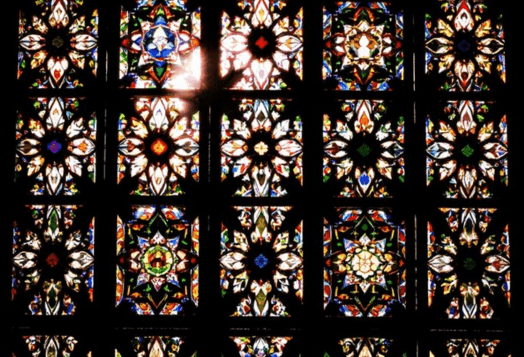
The Timeless Appeal of Indian Aesthetics
As we redefine modern living design, the charm of Indian aesthetics offers a grounding anchor. By artfully blending heritage elements with contemporary sensibilities, you can create a living room that’s not just functional but also tells a story. Whether it’s through a couch, a handwoven rug, or an intricately carved coffee table, let your living room reflect the best of both worlds—a space that’s as forward-looking as it is rooted in tradition.
With the right balance of tradition and innovation, designing living rooms becomes a journey of self-expression.
Disclaimer: This information provided is intended for general informational purposes only. It is not a substitute for professional advice or guidance. For personalised recommendations or specific concerns, please consult a certified professional.


